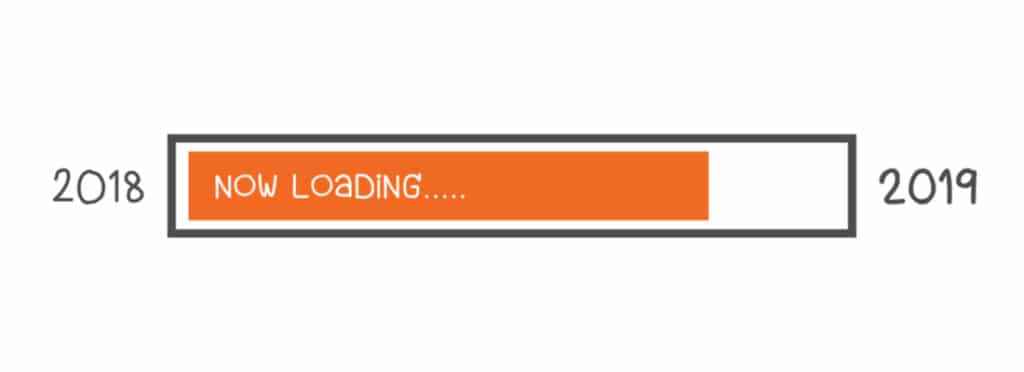The new year is a time for change, reflection, and growth – and there’s no better place to start than with your website. Making sure your site is in top condition is vital, as failing to keep up with tasks like security checks and updates could negatively impact your business.
As you work through your end-of-year to-do list, it’s important to consider your business’ website. Fortunately, getting your site ready for next year is easy, once you know what your to-do list should include.
Although site maintenance is important year round, the new year is the perfect time to carry out small but essential tasks that often get overlooked.
While it’s tempting to focus more on your site’s content, maintenance is vital to its success. If you don’t maintain your site, you can run into a number of serious problems. For example, you risk an increased chance for breaches in security, and even lower conversion rates.
Security is one of the major areas to focus your efforts on. Recent reports show that cyber attacks have become daily occurrences, with 230,000 new malware samples being measured per day. Taking the necessary steps to provide a secure service for your site’s users is vital, especially if you want them to feel secure enough to make purchases.
User experience is another key point to consider. A well-maintained site is more user-friendly, and reflects better on your business as a whole. Just to provide one example, your site’s loading speed can have a massive impact on the impression your business makes with potential customers.
Addressing these issues now will result in less work during the new year. This means you’ll have more time to spend implementing those brilliant new ideas you have for your site. All that’s left is to decide what types of maintenance are necessary.
While there are many tasks you can attend to, we’re going to walk you through four of the most important steps to take right away.
Step 1: Update Your Passwords
Changing your passwords regularly is a smart habit across the board, as it makes it less likely that someone will be able hack your accounts. Nowhere is this more true than on your own website. In fact, 80% of all cyber security attacks involve a stolen password.
If someone were to get hold of your admin account password, they could access important emails, steal customer payment information, or change your site’s content. Making repairs after a security breach like that can be quite difficult. So if you haven’t updated your password recently, now is the perfect time.
You’ll also want to make sure your passwords are secure. Although it’s tempting to keep them simple, something like “password123” doesn’t offer the required level of protection. Longer and more difficult-to-guess passwords are essential – and there are plenty of free password generators you can use to create them.
This advice also applies to any other users of your website. Each person’s account is a potential access point, so you’ll need to remind team members, writers, employees, and anyone else with an account on your site to change their own passwords as the year is wrapping up.
Step 2: Check Your Site’s Security Level
Website security is always important, but the new year is a perfect time to make sure yours is the best it can be. Even the smallest breach could potentially put you and your users at risk.
While there are paid options available, Let’s Encrypt provides SSL certificates completely free of charge. Getting one of these certificates is a quick process, and will do a lot to improve both your site’s security and its user experience.
Step 3: Ensure That Your Site Is Up-to-Date
It’s crucial to keep your site’s software updated, regardless of the platform you’re using. Most website owners are guilty of sometimes ignoring update reminders, but doing this can have a detrimental effect on your site.
Fortunately, taking care of this task is usually as simple as hitting “Update Now” the next time you’re prompted to perform an update of any kind. You should also check the lifespan of the various plans and subscriptions attached to your website, such as your SSL certificate. This ensures that they won’t run out over the holiday period, leaving your site at risk.
Step 4: Test Your Site’s Loading Speed
Last but not least, your site’s performance is something you definitely don’t want to overlook. Slower speeds can have a negative impact on your search engine rankings, as well as your conversion rates. In addition, a slow-loading website tends to result in a sub-par user experience.
There are a number of different tools you can use to test the loading speed of your site, including Google PageSpeed Insights, Pingdom Tools and GTmetrix. Simply enter your site’s URL, and you’ll be provided with a detailed analysis of your site’s performance. Depending on the tool you use, you may also get advice on how to improve speeds; implementing these suggestions before the new year arrives is a smart move.
User expectations are continuing to grow, and getting their attention can be an increasingly difficult task. On the positive side, carrying out some simple end-of-year site maintenance is a great way to to attract a steady stream of visitors. Taking the time to make the small changes we’ve outlined can improve user experience and maximize security, giving you and your business a strong start to 2019.
What changes are you going to make on your site to get it ready for the new year? Let us know in the comments section below!
